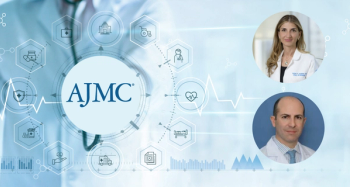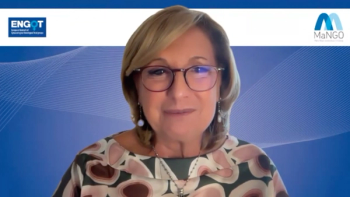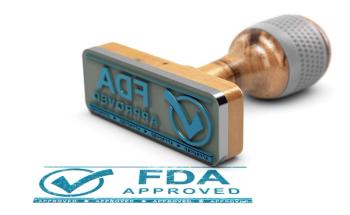
Avalere Consultants Untangle the MIPS Conundrum for Oncologists
Richard Kane and Caroline Pearson, both from Avalere Health, provided oncologists gathered at the 2018 Community Oncology Conference an overview of reimbursement programs offered by CMS and advice on navigating them.
The trials and tribulations of enrolling in reimbursement programs—particularly the quality reporting, technology requirements, and measures—have been a significant cause for concern for physicians and practices. This has proven true for CMS’ Merit-based Incentive Payment System (MIPS), as well as the Advanced Alternative Payment Models (A-APMs).
MIPS experts Richard Kane and Caroline Pearson, both from Avalere Health, provided oncologists gathered at the 2018 Community Oncology Conference an overview of these programs and advice on navigating both MIPS and the cancer-specific
“We need a number of strategies to bend the cost curve,” Pearson said. “Ultimately, we want value in the form of higher-quality, lower-cost care.” It is challenging, however, to identify and measure value before we see it, which is really hard and complicated. “We also have to set up the right payment incentives to push people to adopt this path. And then, as a provider, they need a strategy to implement these changes,” she added.
Pearson explained that while instigating these changes can be difficult, a stepwise approach can help. The first step is the initial decision to move away from the fee-for-service care model and toward value-based payments. The next step in this migration toward increased risk is shared savings, episodic bundles, partial capitation, and finally, full capitation, she said.
“Taking this specific approach, Congress
According to Pearson, the SGR fix is the first accomplishment of MACRA. The act also stabilized physician Medicare payments with a 0.5% payment update in each of the 4 years prior to MIPS kicking in. “MACRA also encouraged physician participation in advanced APMs,” she said, with a A-APM annual bonus payment of 5%.
Pearson believes that a majority of providers will participate in MIPS, while A-APMs participation will grow over time. “CMS predicts that 75% of clinicians will participate in MIPS and 25% will be a part of an A-APM in 2018,” she said.
So, what can CMS do to aid this migration? “Sharing data with physicians and practices and providing timely feedback is important,” according to Pearson. Only APMs with 2-sided risk qualify as A-APMs. Importantly, OCM participants have the option to switch between 1- and 2-sided risk.
“MIPS is involuntary while OCM is not,” Kane clarified. While the downside risk is key, how much risk are physicians expected to absorb, he asked.
With MIPS, there is a 2-year lag between reporting and when clinicians receive their incentive payment—meaning, 2017 reporting will affect a practice’s 2019 payments.
Kane said that practices have the
In 2017, for example, 45 oncology measures were finalized, 11 of which are new for MIPS. An
“CMS plans to add ‘Improvement Scoring’ to the cost performance methodology for 2018 performance year,” Kane told the audience, “which rewards clinicians for improving their cost category scores over time.”
The formula subtracts the number of cost measures with significant decline in performance from the number of cost measures with significant improvement in performance. The value obtained is then divided by the total number of cost measures to arrive at the Improvement Score.
The Physician-focused Payment Model Technical Advisory Committee is expected to comment on Physician-focused Payment Model proposals submitted by stakeholders and identifying if the proposals meet certain criteria, Kane told the audience. These criteria, he added, include: scope, promotion of quality and cost, value over volume, practitioner flexibility, patient choice and safety, among others.
CMS has introduced a new risk-adjustment approach using the OCM prediction model that can promote the use of novel therapies. This includes:
- Prediction Model, which calibrates using the national set of baseline episodes for the period between July 2012 and June 2015
- Experience Adjuster, which controls for unmeasured selection at the practice level
- Adjustment for Novel Therapies, which controls for the use of novel treatments
In terms of improving A-APM options for oncology, Kane explained that that the Centers for Medicare & Medicaid Innovation has made several changes within OCM, and the next iteration, OCM 2.0 is also under development.
It is important to consider, however, that earlier this year, the Medicare Payment Advisory Commission
The proposal has gained some followers, like Gail Wilensky, PhD, senior fellow, Project HOPE, who proposed that
Newsletter
Stay ahead of policy, cost, and value—subscribe to AJMC for expert insights at the intersection of clinical care and health economics.













































